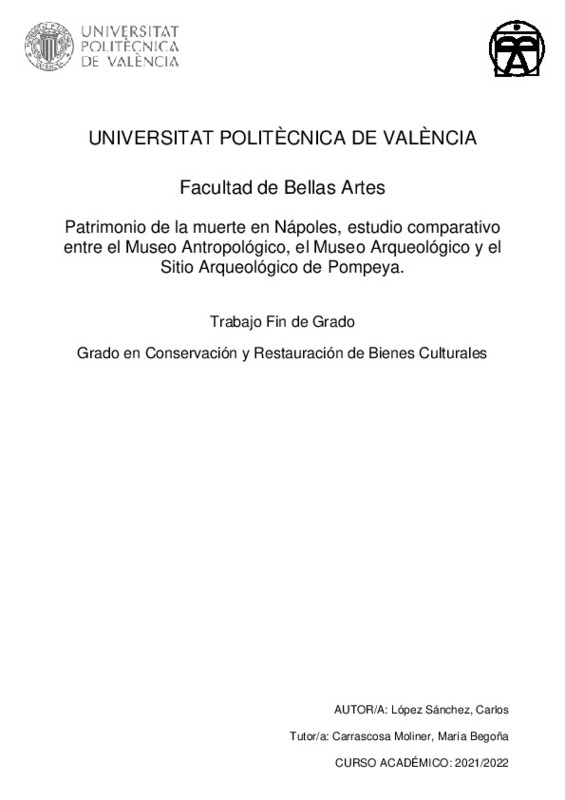JavaScript is disabled for your browser. Some features of this site may not work without it.
Buscar en RiuNet
Listar
Mi cuenta
Estadísticas
Ayuda RiuNet
Admin. UPV
Patrimonio de la muerte en Nápoles, estudio comparativo entre el Museo Antropológico, el Museo Arqueológico y el Sitio Arqueológico de Pompeya.
Mostrar el registro completo del ítem
López Sánchez, C. (2022). Patrimonio de la muerte en Nápoles, estudio comparativo entre el Museo Antropológico, el Museo Arqueológico y el Sitio Arqueológico de Pompeya. Universitat Politècnica de València. http://hdl.handle.net/10251/184455
Por favor, use este identificador para citar o enlazar este ítem: http://hdl.handle.net/10251/184455
Ficheros en el ítem
Metadatos del ítem
| Título: | Patrimonio de la muerte en Nápoles, estudio comparativo entre el Museo Antropológico, el Museo Arqueológico y el Sitio Arqueológico de Pompeya. | |||
| Otro titulo: |
|
|||
| Autor: | López Sánchez, Carlos | |||
| Director(es): | ||||
| Entidad UPV: |
|
|||
| Fecha acto/lectura: |
|
|||
| Resumen: |
[ES] En el siguiente trabajo se pretende analizar la relación de tres importantes museos napolitanos: el Museo Antropológico, el Museo Arqueológico Nacional y el Sitio Arqueológico de Pompeya con los restos humanos que ...[+]
[EN] This paper aims to analyze the relationship of three important Neapolitan museums: the Anthropological Museum, the National Archaeological Museum and the Archaeological Site of Pompeii with the human remains they ...[+]
|
|||
| Palabras clave: |
|
|||
| Derechos de uso: | Reserva de todos los derechos | |||
| Editorial: |
|
|||
| Titulación: |
|
|||
| Tipo: |
|
Localización
recommendations
Este ítem aparece en la(s) siguiente(s) colección(ones)
-
BBAA - Trabajos académicos [5086]
Facultad de Bellas Artes







